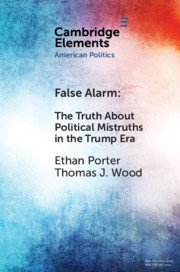Element contents
False Alarm
Published online by Cambridge University Press: 30 September 2019
Summary
- Type
- Element
- Information
- Series: Elements in American PoliticsOnline ISBN: 9781108688338Publisher: Cambridge University PressPrint publication: 03 October 2019
References
- 42
- Cited by



